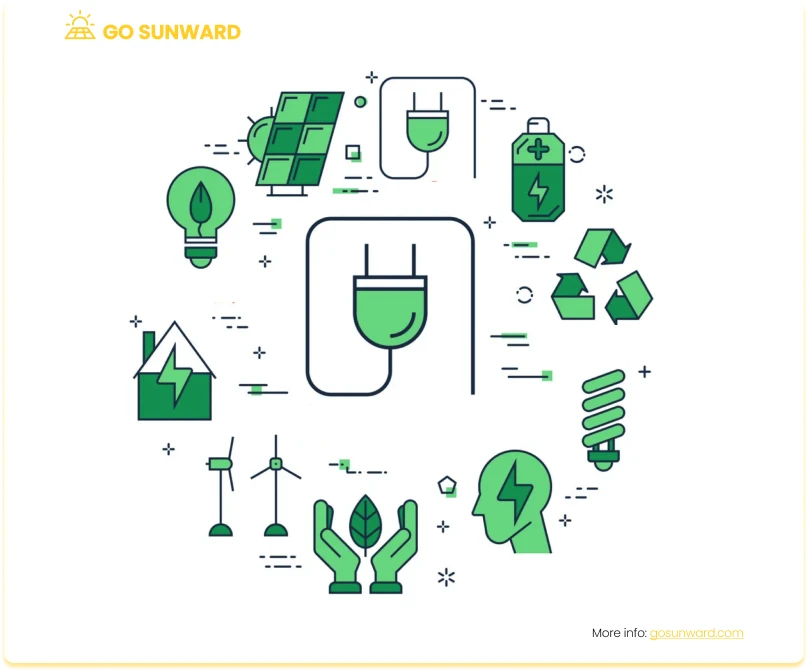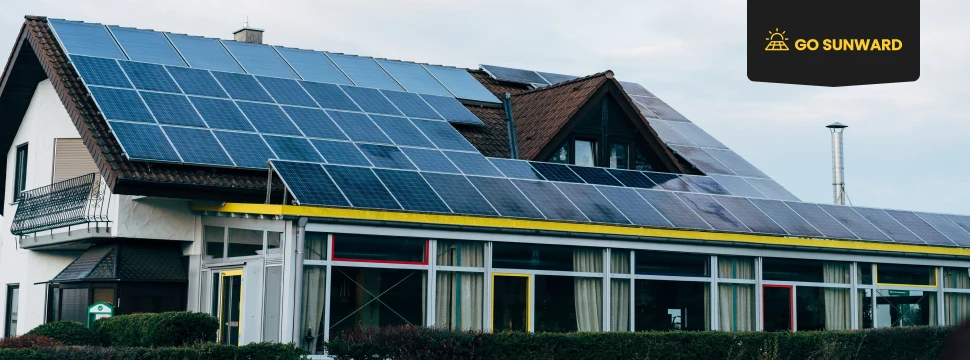Do Power Saving Devices Work?
In today’s energy-conscious world, the hunt for efficient and sustainable energy usage has never been more important. With a growing global concern about energy conservation and the environmental impact of heavy use, individuals and businesses alike are increasingly turning to power-saving devices as potential solutions. These devices promise to reduce energy consumption and save you money on electricity bills while simultaneously reducing your carbon footprint. However, amidst the buzz surrounding these technologies, fundamental questions linger: Do power saving devices work? And are they actually worth the money? In this article, we examine various power-saving devices, their claims, costs and efficacy. This will help you to navigate scams and find the right power-saving devices for you and your home.
Do Power Saving Devices Work?: The Promises & Claims
Manufacturers of power-saving devices often make a range of enticing promises and claims that captivate consumers’ attention, seeking ways to lower their energy bills and reduce their carbon footprint. These companies employ catchy slogans and persuasive marketing strategies to promote their products as revolutionary solutions to the energy conservation challenge. From guarantees of substantial reductions in electricity consumption to the allure of a greener and more eco-friendly lifestyle, these promises strike a chord with individuals keen to make a positive impact on both their finances and the environment.
It’s not uncommon to encounter slogans like “Cut Your Energy Costs in Half!” or “Save the Planet, One Appliance at a Time!” that tap into the desires of conscientious consumers. However, as we delve deeper into the realm of power-saving devices, the question arises: do these claims truly stand up to scrutiny?
What Types Of Power-Saving Devices Are Available?
Various types of power-saving devices are available on the market, each designed to address specific aspects of energy consumption and improve efficiency. Here are some common categories of power-saving devices:
- Voltage Stabilizers and Optimizers: These devices are designed to regulate and stabilize voltage levels, ensuring that electrical appliances receive a consistent and optimal voltage supply. By preventing voltage fluctuations and spikes, they can extend the lifespan of appliances and reduce energy wastage.
- Smart Thermostats: Smart thermostats are programmable devices that enable precise control over heating and cooling systems. They can learn your heating and cooling preferences, adjust temperature settings based on occupancy, and provide remote access through smartphone apps. This leads to more efficient HVAC (Heating, Ventilation, and Air Conditioning) operation and potential energy savings.
- LED Lighting Controls: LED lighting systems, combined with smart controls, allow users to adjust lighting levels, create schedules, and dim lights when full brightness is not necessary. These controls can significantly reduce electricity consumption for lighting while maintaining comfort and convenience.
- Energy Monitors and Smart Plugs: Energy monitors track the real-time energy usage of individual appliances and provide insights into which devices consume the most power. Smart plugs can be used to remotely control and schedule the power supply to appliances, preventing energy waste when devices are not in use.
- Power Factor Correction Devices: These devices improve the power factor of electrical loads, which is the ratio of real power to apparent power in an electrical system. By correcting power factor, they reduce reactive power and enhance overall energy efficiency.
- Battery Energy Storage Systems (BESS): BESS devices store excess electricity generated from renewable sources, such as solar panels, and release it when needed. They help optimize energy use and can serve as backup power sources during grid outages, further enhancing energy efficiency.
- Home Energy Management Systems (HEMS): HEMS solutions integrate various devices and technologies to provide comprehensive control and monitoring of a home’s energy consumption. They offer insights into energy usage patterns and enable users to make informed decisions to optimize energy efficiency.
These power-saving devices cater to different aspects of energy consumption, and their effectiveness can vary depending on individual needs, the specific device chosen, and how well it aligns with the user’s lifestyle.
The Science Behind Power-Saving Devices
How do power saving devices really work? They are designed to reduce energy consumption by optimizing the usage of electrical appliances and minimizing wastage. These devices work in various ways to decrease the amount of electricity required to power our homes and businesses.
Power-saving devices operate based on scientific principles to optimize energy consumption. Power factor correction (PFC) enhances efficiency by improving power factor and reducing reactive power, lowering overall energy consumption. Voltage optimization stabilizes voltage levels, making appliances more efficient while reducing strain on the electrical grid. Energy monitoring plays a crucial role, allowing devices to control electricity flow intelligently, minimizing waste during non-essential periods. Together, these principles align energy usage with actual needs, fulfilling promises of reduced energy bills and a smaller environmental footprint.
What Is The Best Way To Install Power Saving Devices?
Before installing any power-saving devices, it is essential to assess your energy consumption patterns and identify areas of improvement. An energy audit can help you understand which devices or appliances consume the most energy and where you can make the most significant savings.
Each power-saving device comes with specific installation instructions on the box the manufacturer provides. It is crucial to read and understand these instructions thoroughly before beginning the installation process. Furthermore, while homeowners can easily install some power-saving devices, others may require professional assistance and engineering experience.
Proper placement of the power-saving device is crucial for its effectiveness. Devices like voltage stabilizers should be installed close to the electrical panel or distribution point to provide optimal voltage stabilization for the entire circuit. For individual appliances, place them near the appliance or outlet for targeted energy optimization. You also may need to verify that the power-saving device is compatible with your electrical system and appliances. Ensure it meets the voltage and load requirements for your specific setup to avoid potential issues or damage.
Real-World Effectiveness
The real-world effectiveness of power-saving devices has been a subject of both scientific study and practical application. Numerous research studies have been conducted to assess the impact of these devices on energy consumption and cost savings. While we have found through our research that the results vary depending on factors like the type of electrical appliances and the condition of the local power grid, some key findings shed light on their effectiveness.
Studies have shown that power-saving devices do work and can reduce energy consumption, particularly when voltage fluctuations are common. Devices like voltage optimizers can help stabilize voltage levels, improving efficiency in various appliances. In some cases, households and businesses have reported energy savings ranging from 5% to 20%, depending on the specific devices and conditions.
However, it’s important to note that several factors can influence the effectiveness of these devices. The type of electrical appliances in use, for instance, can play a significant role. High-energy-consuming appliances like air conditioners and refrigerators may benefit more from power-saving technologies than low-energy-consuming devices like LED light bulbs.
Local power grid conditions and the quality of the electricity supply can also impact the performance of these devices. Power-saving devices may have a more noticeable effect in areas with frequent voltage fluctuations or poor power quality.
To offer a more practical perspective, real-world testimonials and case studies from individuals and businesses who have successfully employed power-saving devices can provide valuable insights. These firsthand accounts often highlight the actual energy savings and financial benefits experienced by users. By sharing these success stories, individuals can better understand how these devices can make a difference in their energy consumption and cost-saving efforts.
Energy Efficiency vs. Cost
When assessing the value of power-saving devices, one critical aspect to consider is their cost-effectiveness. The initial investment required for these devices can vary widely, depending on the type, capability and complexity of the technology involved. However, it’s important to view this cost outlay in the context of the potential long-term savings on energy bills. While the upfront cost may seem significant, power-saving devices have the potential to generate substantial savings over time.
To gauge the cost-effectiveness of these devices, it’s essential to calculate the payback period. This period represents the time it takes for the energy savings generated by the device to offset the initial investment. A shorter payback period indicates a quicker return on investment and a more financially attractive proposition.
In many cases, power-saving devices can offer relatively short payback periods, particularly in situations where electricity costs are high or where specific appliances benefit significantly from the technology. As a result, the economic benefits of reduced energy bills can outweigh the initial costs, making these devices a worthwhile investment.
Ultimately, the decision to invest in power-saving devices should involve a thorough cost-benefit analysis that considers both the upfront expenditure and the potential long-term savings. When carefully considering payback periods and energy consumption patterns, power-saving devices can prove to be a valuable tool in achieving energy efficiency and cost savings.
Alternative Ways to Save Energy
While power-saving devices can effectively reduce energy consumption, there are alternative methods for conserving energy that do not rely on such technologies. For a full list of ways to lower your electricity bill and save energy click here.
Firstly, lifestyle changes play a significant role in reducing energy consumption. Simple habits like turning off lights when leaving a room, unplugging devices not in use, and adjusting thermostats to more energy-efficient settings can lead to substantial energy savings over time. To find out what costs a lot of electricity in your home, click here.
Another avenue for energy conservation is investing in energy-efficient appliances. Modern appliances are designed with energy-saving features that can significantly reduce electricity consumption. Upgrading to Energy Star-rated appliances, LED lighting, and well-insulated windows and doors can make a considerable difference in energy efficiency without the need for additional devices.
Additionally, renewable energy sources like solar panels and wind turbines are increasingly viable options for households and businesses seeking to sustainably generate electricity. These systems can offset energy consumption by harnessing low-carbon renewable resources and reducing reliance on traditional grid-supplied power.

Conclusion
In summary, this article on whether power-saving devices work or not has shed light on the truth behind their potential benefits in reducing energy consumption and costs. These saver devices, which operate on scientific principles such as power factor correction and voltage optimization, promise energy efficiency and environmental responsibility. However, their effectiveness can be influenced by factors like appliance types and local grid conditions.
While power-saving devices undoubtedly hold promise, they are just one component of a broader strategy for reducing energy consumption. It is also important to recognize the value of energy conservation strategies such as lifestyle changes, energy-efficient technology and renewable energy. Ultimately, making informed decisions based on your specific energy needs and goals will lead to a lower environmental footprint and cost-effective solutions.




